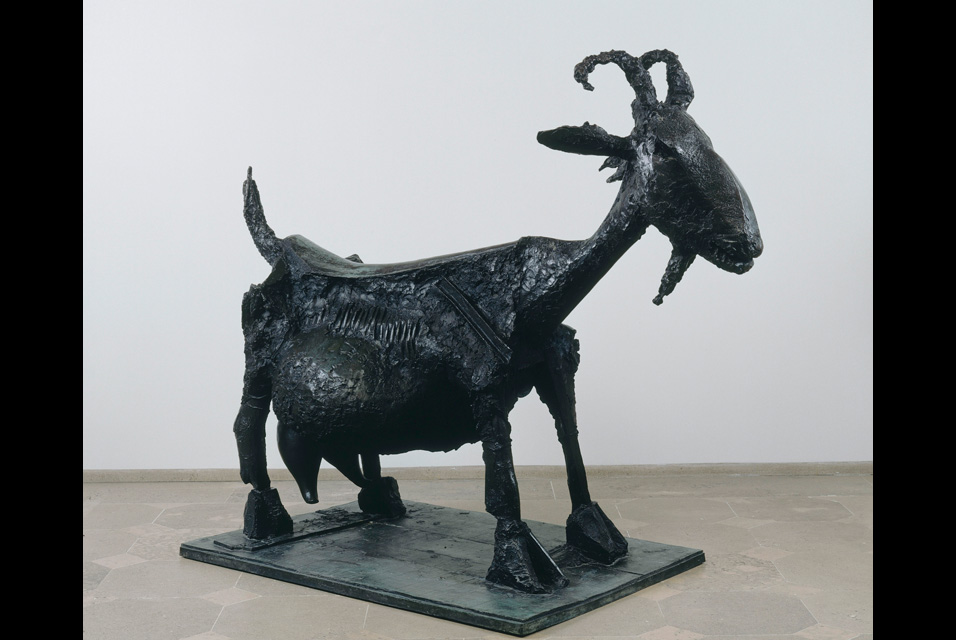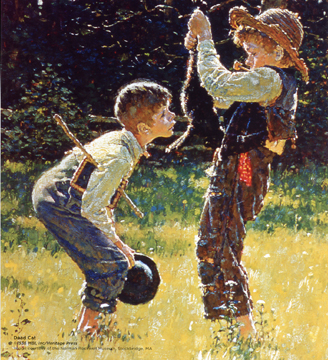"Education consists mainly of what we have unlearned."
(Mark Twain)
The Adventures of Huckleberry Finn, written in 1884 by Mark Twain, is considered by some to be the first piece of true American literature because it had all American themes, characters, regional dialects, and settings. The book is about an "unsivilized" boy named Huck Fin who is going down the Mississippi River. He becomes friends with an escaped slave named Jim and ends up wrestling with his conscience about whether or not to turn him in. Society tells Huck that slavery is acceptable and as he goes down the river, he encounters educated and so called "civilized" people who kill, harm, and manipulate each other. Jim, on the other hand, is kind, intelligent, and caring. Huck begins to see Jim as an equal and far different than all the other people he meets, so he decides to help Jim escape slavery.
In The Adventures of Tom Sawyer, Huck and his friend Tom find $12,000 and they split the money. The Adventures of Huckleberry Finn starts after Huck is adopted by the Widow Douglass and her sister Ms Watson. They try to teach Huck religion, get him an education, and teach him right from wrong. Suddenly, one day Huck's drunk and abusive Pap shows up asking for money. Huck refuses to give him the money and Pap abducts him and takes him to a secluded cabin in the woods. Huck manages to escape to a nearby place called Jackson's Island. There Huck meets a runaway slave named Jim. Huck and Jim escape together on a raft down river.
After a number of adventures, a horrible incident occurs, separating them: a steamboat collides with their raft. Huck fears that Jim was killed and Huck swims to shore and to safety. There he encounters two educated and "civilized" families feuding over something they can't even remember. They shoot and kill each other and wipe out an entire family over it. Thankfully, Huck finds Jim and they get away on the raft.
After reuniting, Huck and Jim meet two people who say they are a duke and a dauphin. They are con-men and try to jip all sorts of people out of their money. Not only do the Duke and Dauphin pretend to be royalty, but they also pretend to be great actors. They stop at the next town where they stage a play called The Royal Nonesuch. The whole thing is just the Dauphin romping around the stage naked and striped like a wild animal. After these devious hucksters swindle the townspeople out of their money, they drift away on their raft with Huck and Jim.
Next they come to a town where the Duke and Dauphin pretend to be uncles coming from England to attend a funeral for their brother. The dead man's will gave the uncles $6,000, so naturally these greedy men want the money for themselves. Huck is disgusted by what the Duke and the Dauphin are doing, so he takes the money and hides it in the dead man's coffin. The Duke and the Dauphin are found to be frauds, and later they and Huck slip away and escape.
The Duke and Dauphin now have no money and decide to stage The Royal Nonesuch again in another town. They leave Jim at the raft and head into town to begin advertising their show, but they decide to turn Jim in as a runaway slave for the money. The Duke and Dauphin sell Jim and don't tell Huck. News gets out about the Royal Nonesuch, and the townspeople tar and feather the Duke and Dauphin. Meanwhile, Huck decides to help Jim escape, even though it means he might have to sell his soul to the devil.
Huck finds out that Jim was sold to a farm owned by the Phelps, a local family. Huck arrives at the farm and is greeted by a woman running toward him, who mistakes him for his friend back in St. Petersburg, Tom Sawyer. Huck feels very lucky because he knows everything about Tom and this will help him further his plan to save Jim. He leaves the house and pretends he has has to go get his bags in town, but he really wanted to make sure the real Tom doesn't show up. He gets half-way to the next steam boat when the real Tom pulls up in a coach. Huck explains the situation to Tom and says that he is going to steal Jim. To Huck's surprise, Tom agrees to help Huck. Tom is very well-known, has a family, and has pride, and if he helps free Jim, he might be looked down upon and bring disgrace to his family. Huck, on the other hand, has nothing to lose, only something to gain: Jim's freedom.
Tom starts to formulate a plan. First he pretends to be his cousin Sid, and then they begin digging a hole into the cabin to free Jim. Tom has these crazy ideas that everything has to be done by the book, which means that everything has to be done the way prison escapes are portrayed in action books. Tom comes up with all sorts of flapdoodle (nonsense) of how to help Jim escape. The boys even go so far as to get snakes, rats, and spiders for Jim to tame and train them as his prison companions. Before they tried to save Jim, he was kind of comfortable in the slave cabin, but after Huck and Tom started "helping" him escape, he was pretty miserable. Eventually, it was time to really free Jim.
Tom decides that they need to write "nonamous" letters that state that slave stealers are coming to get Jim. The Phelps family reads the letters, and get all the farmers from around to catch the slave stealers and shoot them. By the time the farmers reached the cabin, Huck, Tom, and Jim had scurried silently down to the fence. Huck and Jim scrambled over, but Tom got his britches snagged on a splinter of wood. The farmers charged toward them thinking they were the slave stealers. As quick as a flash, Huck, Tom, and Jim were in their canoe paddling toward an island when Tom excitedly announced that he had a bullet in his calf.
 |
| My map of the Phelps's farm and the Big Escape |
Huck and Jim decided to go get a doctor to help Tom, and Huck went back to the Phelps's farm. Two days later Tom was carried by the doctor back to the Phelps's. The Doctor explained how Tom was shot in the leg and that Jim risked his freedom to help him remove the bullet. Jim is put back in his cabin this time with chains on his hands and feet. The doctor tells the guards not to be too rough on him because he helped Tom. Tom meanwhile is sick in bed recovering with Huck near him. When Ms. Phelps enters the room he tells her that he and Huck freed Jim. Ms. Phelps doesn't believe this but Tom reassures her it did happen. Then to everyone's surprise, Tom's guardian, Aunt Polly, all the way from St. Petersburg, enters the room. She says she got worried after Ms. Phelps sent her a letter saying that Tom and Sid came to the farm. She only sent Tom. She says Huck is not Tom but really Huckleberry Finn and Tom is not Sid but Tom Sawyer.
Huck is surprised to learn from Tom that Jim had been a free man the whole time. Miss Watson, Jim's owner, passed away and in her will she freed him. There was no need to help him escape after all. Tom created this whole thing just for the adventure of it. In the end, Jim celebrates his freedom and Tom pays him forty dollars for playing prisoner. Huck is adopted by the Phelps and to keep from being civilized again, he decides he wants to head out to Indian Territory with Tom and Jim.
There is an expression my mom uses: "You can catch more flies with honey than you can with vinegar." By using humor to explain important social topics, Mark Twain gets his readers to rethink their beliefs and reeducate themselves. He thinks critically about slavery and the negative traits of society (people are greedy and easily manipulated, and they profess to be cultured and civilized, but may be anything but). On the raft, life for Huck and Jim is peaceful, easy, friendly, and simple, whereas life on shore is a complete contrast. Because of the friendship he develops with Jim, he faces big moral changes about the true meaning of brotherhood and humanity, unlearning everything he has learned about African-Americans.





















